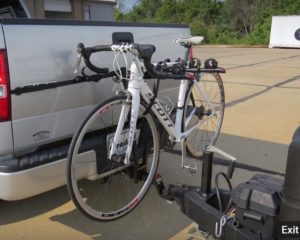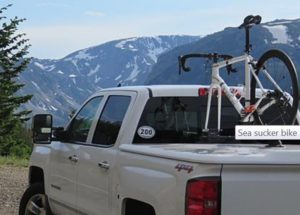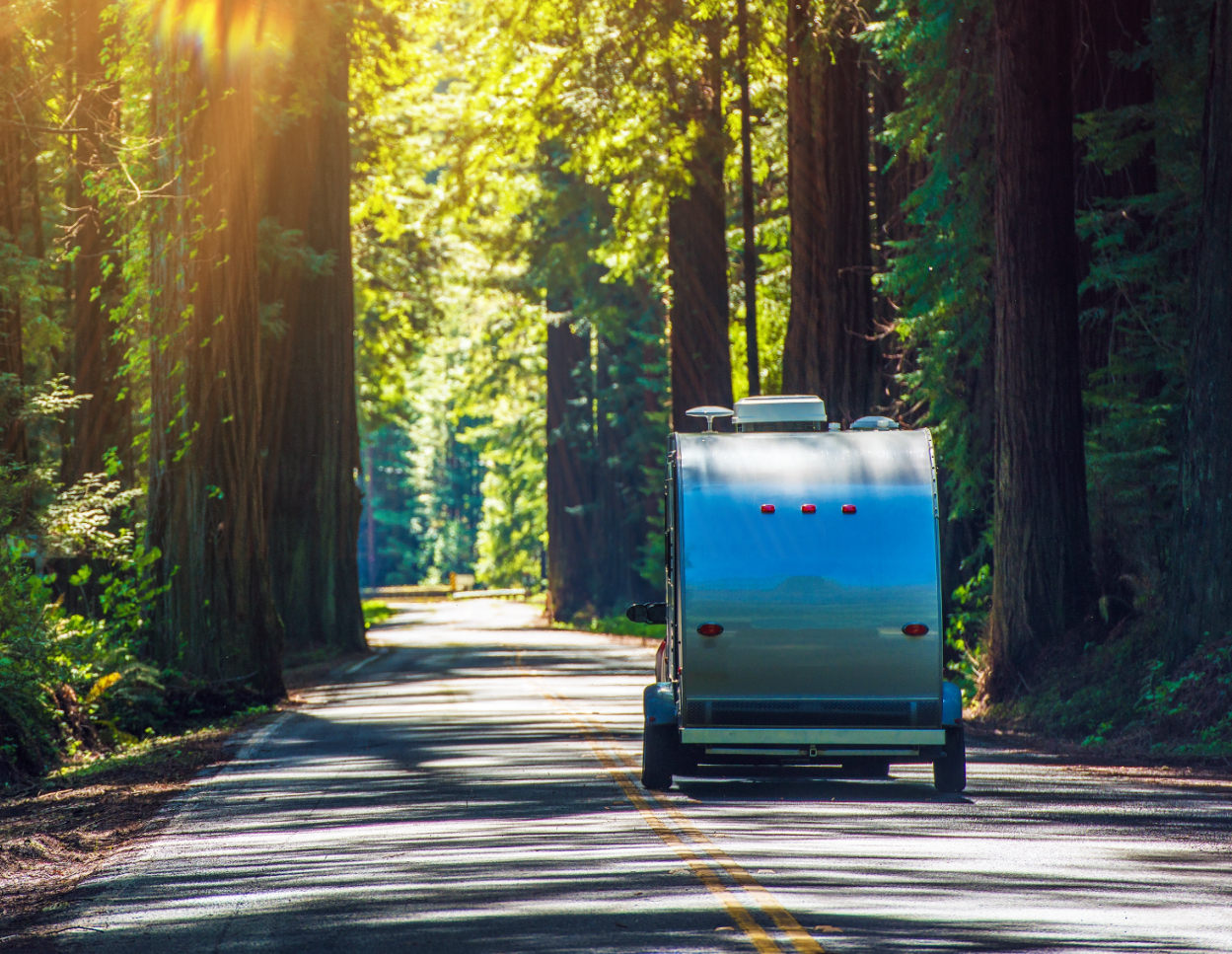
When we bought our Ford F150 to tow our travel trailer to music festivals and campgrounds, we thought we had all the capacity we needed. With a four-door crew cab spacious enough for five and a large bed with a hard tonneau cover, we envisioned loading it with lots of stuff and room to spare. Except, we came to find, for our bikes. With the bed packed with other camping supplies and our trailer manufacturer fairly adamant about never attaching anything to the rear bumper or installing a hitch to the stern, how would we shuttle our bikes to our fav fests? We found that a number of manufacturers have it all figured out. Now, which solution was best…?
As music festivals like Wanee or Lockn’ sprawl across hundreds of acres, cycling makes short work of long hauls. Several years ago, we began making bikes part of the gear we’d haul. But as noted, my trailer maker Coachmen strongly discourages any attachments to the rear bumper (the poop pipe apparently all it can handle). The torque of bikes wobbling or “rattling” on the bumper could twist the bumper or break the welds.
Curt Group Clamp-On Bike Rack in action. More on the Curt below.
That leaves us to place the bikes in the bed of the F150 (after pulling the front wheels, as the A.R.E. hard tonneau cover won’t close with the wheels in place). Or we can store the bikes inside the trailer, and risk damage if they shifted or fell.
One possible solution is the 4Square safety strut. We saw this at the Florida RV Super Show in January. The two of the U-shaped brackets go around the four-inch bumper and are bolted to the support beam. The manufacturer says they prevent torquing and breaking of the welds at the point of contact. They cannot prevent bending of the bumper itself, which some manufacturers warn against, especially when attaching a bracket with significant weight.

Other manufacturers include popular storage and carrier manufacturer Thule, as well as Seasucker. The Florida-based company’s suction cup carriers attach to the roof – or, in my case, the hard fiberglass tonneau cover – and hold bikes in place. Backflip manufactures a rack that elevates and secures the bikes above the truck bed, leaving the tonneau free to open and the bed fully accessible.
If you are limited with access points for bike racks in the back, installing a hitch and bike rack to the vehicle’s front is an option. And a potential mess. In Florida during the spring lovebug season, or anywhere during any time when bugs, rain, or mud abound, you could get filth into the gears, chain, derailleurs, and brakes. Bike bags might help, but you don’t want to starve the radiator of air, especially when the vehicle already is huffing with a trailer or other heavy load.
So the front is out. Coachmen says the stern is N.G. Our A.R.E. tonneau cover on the F150’s bed makes access challenging. What if we placed the bikes between the truck bed and the trailer itself?
We had a lengthy chat with Eric Jevanord, a product manager for towing accessories with Curt Group, a leading manufacturer of truck, towing and hauling products and a solution came to light.

Curt’s Clamp-On Bike Rack attaches to the two-inch trailer hitch ball mount or receiver tube between the truck bed and the trailer. Support straps secure the rack and up to three bikes to the tailgate to prevent rattle or wobble. Make sure your solution more than just secures your bike. You want your bike protected from abuse (a rack that scratches the paint job on your $4,000 composite bike can be a major buzzkill) and theft (a $30 cable lock can thwart a thief).
“Our motto is, if there’s a vehicle out there, we’re going to put a hitch on it. We do a pretty decent job of covering anything that has wheels on the road,” Jevanord says. “Number one is keeping in line with the vehicle recommendations and warnings.”
Wise words to any rider.
